Salobreña in Granada province is a Moorish castle and white village on the Costa Tropical, stunning scenery
By Nick Nutter | Updated 25 Aug 2022 | Granada | Villages |
Login to add to YOUR Favourites or Read Later
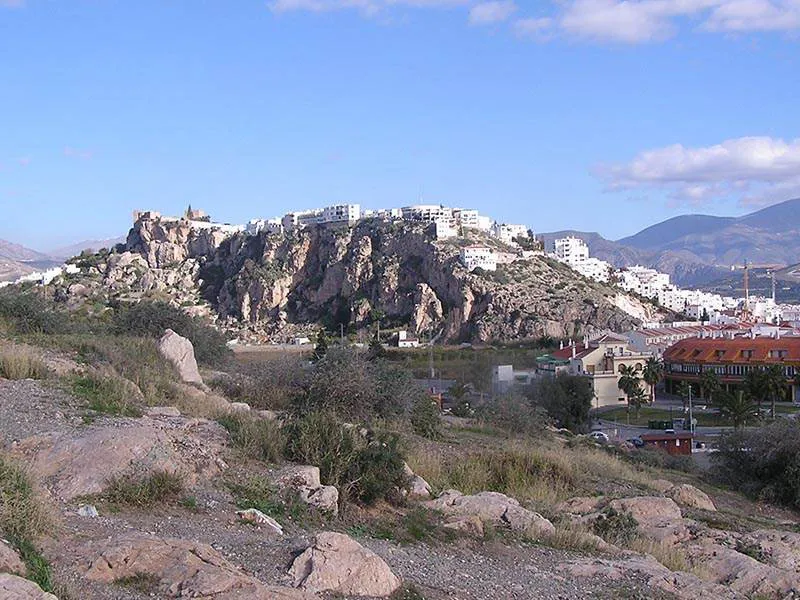
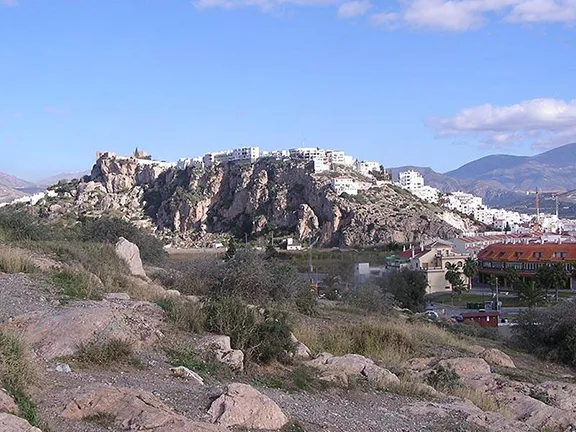
Salobrena from the West
If you are driving east from Nerja you have a choice of route. The recently (2013) opened stretch of the A7 takes you on a huge sweep inland, well to the north of Motril, before regaining the coast, whilst the old N340 meanders along, following the contours of the cliffs, affording the patient traveller expansive views of the coast entirely missed by his faster travelling colleague inland. Along the whole of this coast the mountains inland send gigantic ridges down to the sea producing narrow rocky bays and spectacular scenery that must have been a nightmare for road engineers. Between the ridges there is often a river valley that over the eons has created a wide, low lying delta. One such is the Rio Guadalfeo that enters the sea at Salobreña.
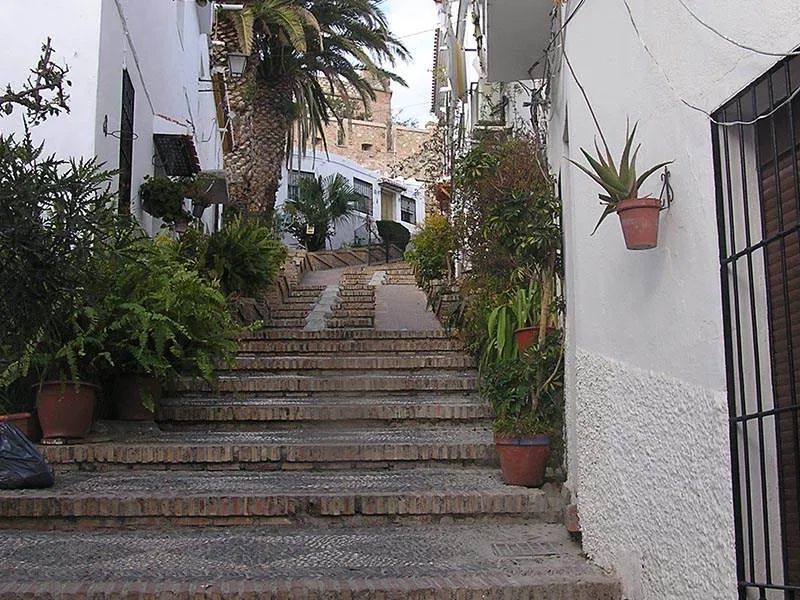
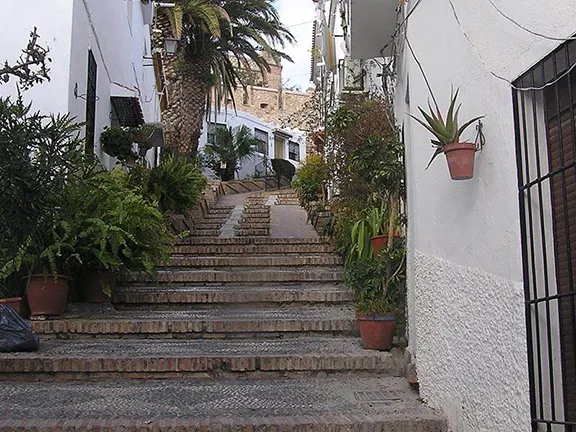
Steep Streets in Salobrena
As you pass over a ridge of the Monte de los Almendros 5 kilometres east of Almunecar the valley ahead comes into view. The delta itself is about 8 kilometres wide at its mouth and about the same deep. Being in the centre of the Tropical Coast this fertile land is covered with sugar cane plantations and tropical fruit orchards. Unlike much of the growing areas west and east, this valley has few of the plastic growing tunnels that can make some places look untidy. The very small seaside town of Caleta just visible below is the site of the last sugar factory in Europe, closed in 2006, but what strikes you most as you top the ridge is Salobreña.
This whitewashed town is perched on a solitary buttress of rock made more prominent by the flat, low land that surrounds it. Right at the summit, dominating the entire view is a well-preserved and restored Moorish castle. If you stay on it the road sweeps you past to the north bypassing what, for the intrepid traveller, is a fascinating place. The purple mountains of the Sierra del Chaparral, part of the Sierra Nevada, shelter the delta on three sides and the blue Mediterranean guards the fourth.
Turn off the N340 and enter the town. Park as soon as you can, the streets above the newer part of town soon become narrow and steep with no parking anywhere. In any case the best way to appreciate this town is on foot, even if it does take your breath away as you wander up the hill following the signs for the museum that is situated in the old Town Hall.
The ticket to the castle includes entrance to the museum and can be purchased at either place but there are two reasons for visiting the museum before the castle. Firstly it gives you a chance to get your breath back and secondly the displays, very good for a small town museum, include a model panorama of the area with archaeological sites of interest dating back over 6,000 years that you can then spot from the castle ramparts. Many of the artefacts found locally from the Stone Age, Neolithic, copper, bronze, Punic and Roman periods are on display.
As you leave the museum you again head uphill, now following the signs for the castle. On your left just above the museum is a colourful large plaque on a wall. Closer examination shows that it is in effect a map of Salobreña and its surroundings with thirty points marked on it. Each point is a notable plant, tree or shrub that grows in the fertile and flat land surrounding the town and range from the familiar such as bougainvillea to the not so familiar like the tobacco tree and sugar cane. It would take a good two or three hours to visit them all but, for those interested in plants, it is an interesting nature trail that also takes you through a small park laid out beneath the brooding mass of rock that supports the town.
Finally arriving at the castle entrance you will notice that the building has been restored in an unobtrusive manner, the repairs blending almost seamlessly with the original.
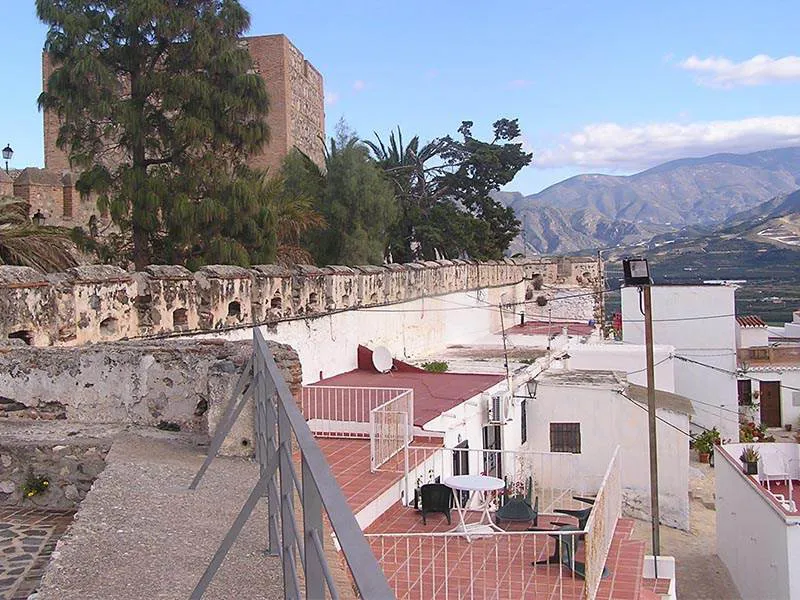
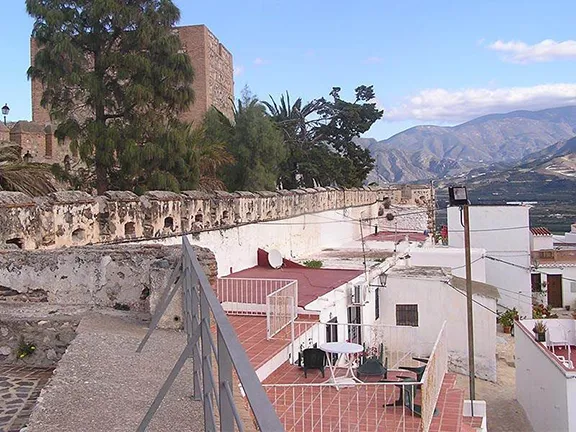
Salobrena, old and new
Salobreña castle was built in the 10th century and follows the normal Moorish design of an Alcazaba, an enclosed military and social area, surrounded by defensive walls and towers. The keep in the Alcazaba is the strongest fortified position, used as a residence by the king and his guests, for Salobreña castle became the summer residence of the Granadian monarchs. It was also used as a prison for dethroned sultans and some Nasrid kings like Yusuf III and Muhammad IX (the ‘left handed king’). The latter, according to a Washington Irving tale, ordered his beautiful daughters, Zaida, Zoraida and Zorahaida to be held captive in the fortress for several years.
The castle offers superb views of the surrounding area over which it presides and there are many references to the town and its castle from Arabic scripts.
The district around was famous as far back as the 10th century for its sugar cane, rice and bananas. The mountains behind were used for stockbreeding and terrace cultivation of olives, dates, vegetables and fruits. The traces of these terraces can still be seen and the lower ones are still in use. The fortress was also an important part of the defensive chain of fortifications along the coast, even into Christian times.
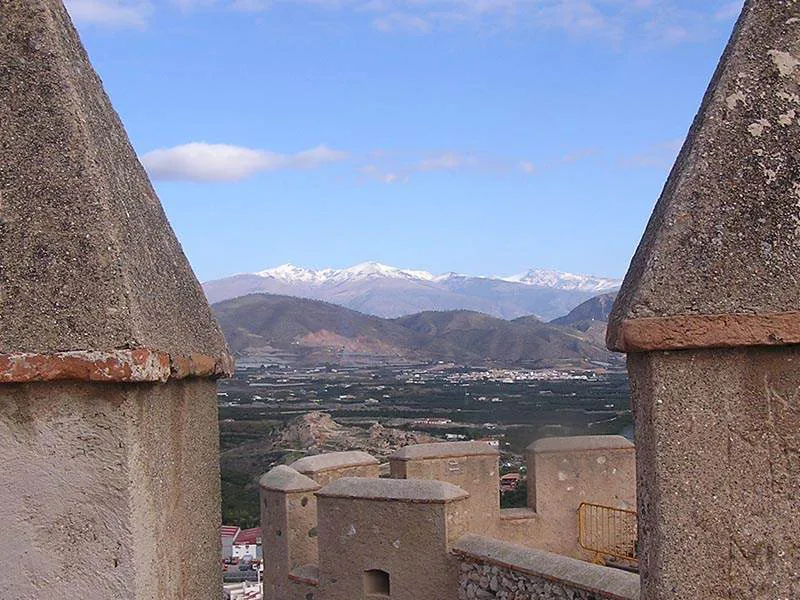
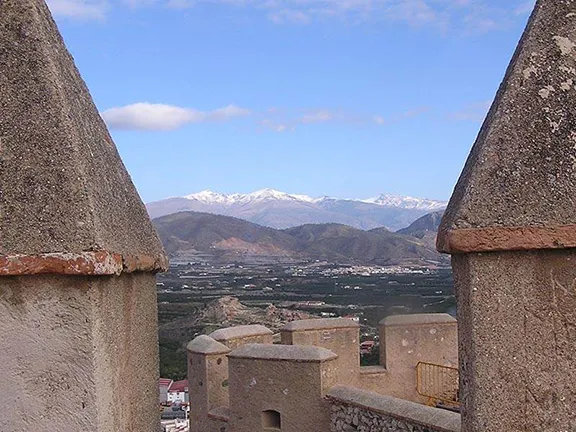
View from the Ramparts
Clustering up to the defensive walls, as if for the protection offered by their shelter, is the oldest part of the town. Many of the houses today must be on foundations dating back a thousand years or more and in many cases the castle wall provides one side of the residence whilst it is a short hop from the lower ramparts to the flat roofs. Salobreña castle is still an integral part of the fabric of the town.
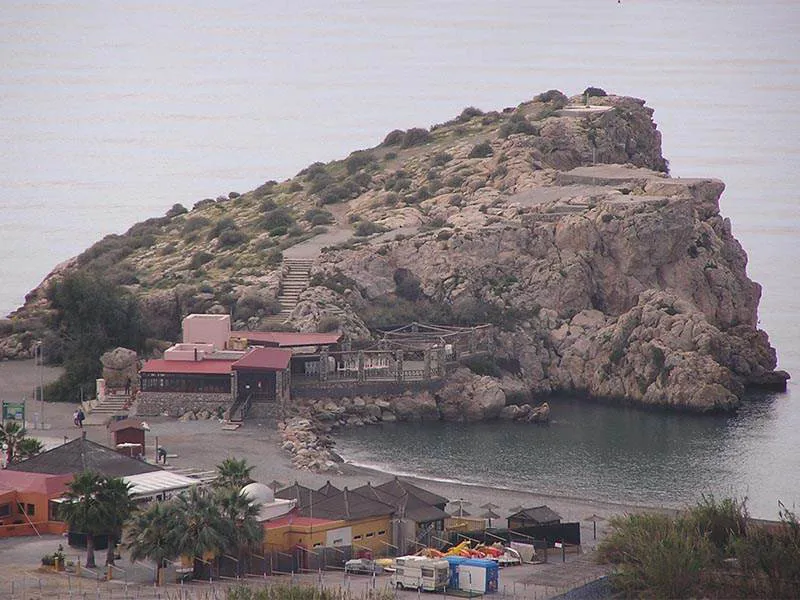
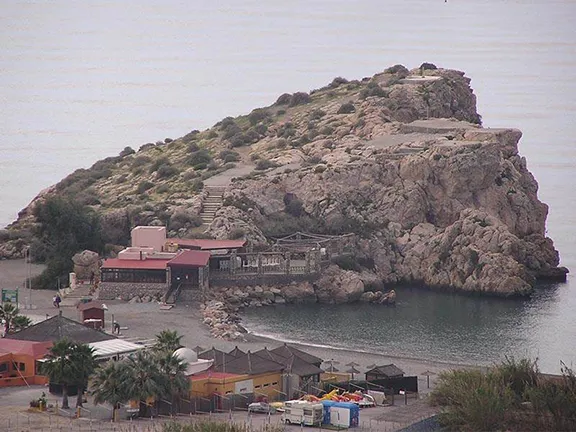
El Penon
From the castle ramparts, looking to the shoreline, there is an outcrop of rock jutting out into the bay. It is known as El Peñón. Easily defendable, the outcrop has been inhabited since Neolithic times and artefacts from that period and the Phoenician period are displayed in Salobreña museum.
Sheltered by the rock is a beach that has everything. Safe swimming, rock pools, plenty of vantage points for fishing and a couple of chiringuitos, a splendid way to end a visit to one of the most undiscovered coastal towns in Andalucia.